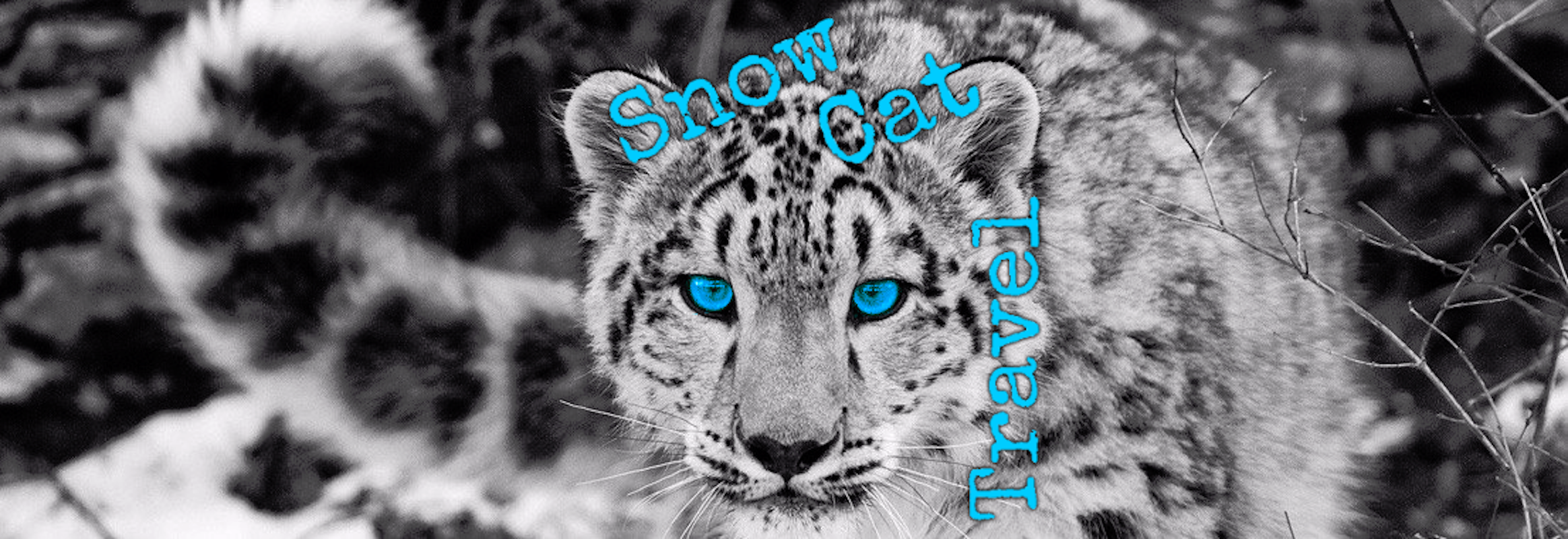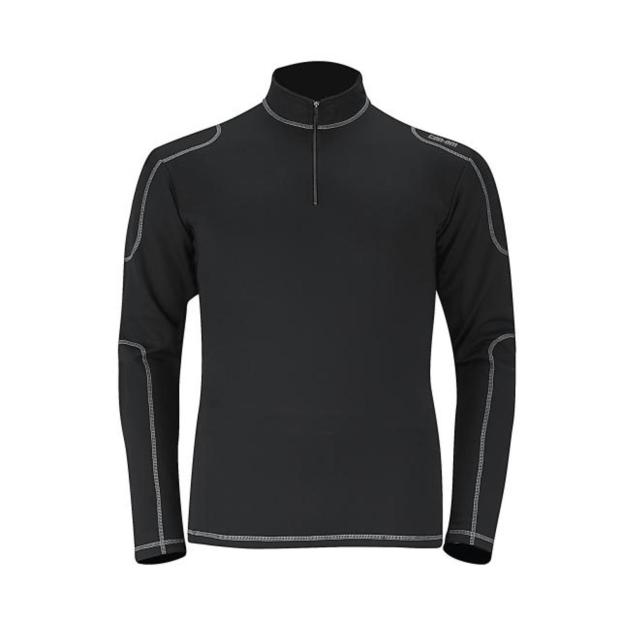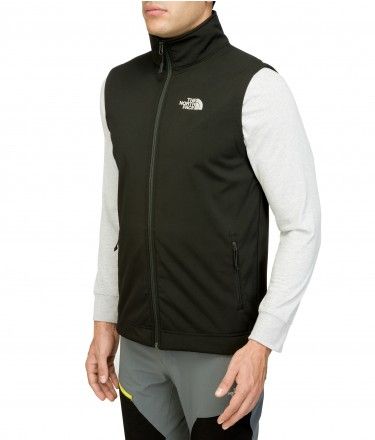“There’s no such thing as bad weather, just bad clothing”
Does this mantra ring true?
Oh yes!
Be smart & don’t let being ill equipped and poorly prepared ruin what could be the greatest adventure of your life.
Here’s our guide as to what clothing and equipment you should have to enjoy a trek in Nepal to the max….
Firstly please consider this statement too:
The Nepalese are still traditional and conservative in the way they dress. To avoid embarrassment on both sides, we recommend that you respect this, by not wearing revealing clothing or sleeveless tops while visiting Nepal. Shorts are acceptable, but they should reach to just above the knee and be modest and for women it is preferable to wear trousers or a long skirt.
As you trek through the Himalayas you’ll undoubtedly come across people who are not appropriately dressed. The Nepalese are usually too shy or embarrassed to draw attention to this.
To the greater extent the items you bring with you on your Nepal trek fit firmly in the ‘function over fashion’ bracket. In other words how you look is not important. There’s no catwalk in the Himalayas and no prizes for looking super cool. Then again, arguably outdoorsy clothing seems to be becoming a fashion statement in cities too.
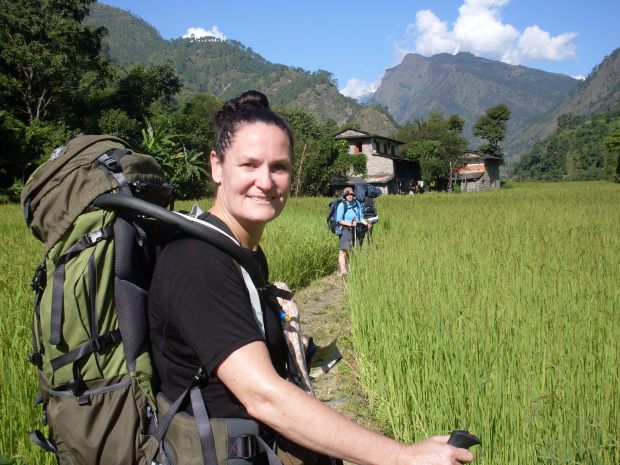
Within the confines of a general article it’s not possible to specifically cover every single item for all treks. Some may require more additional warm or specialist mountaineering clothing and other particular items too e.g. walking ice -axe. Some lower altitude treks may require less in the way of additional warm clothing.
If you’re trekking with Snow Cat Travel we produce a tailor made packing list for you dependent upon the trek you have chosen.
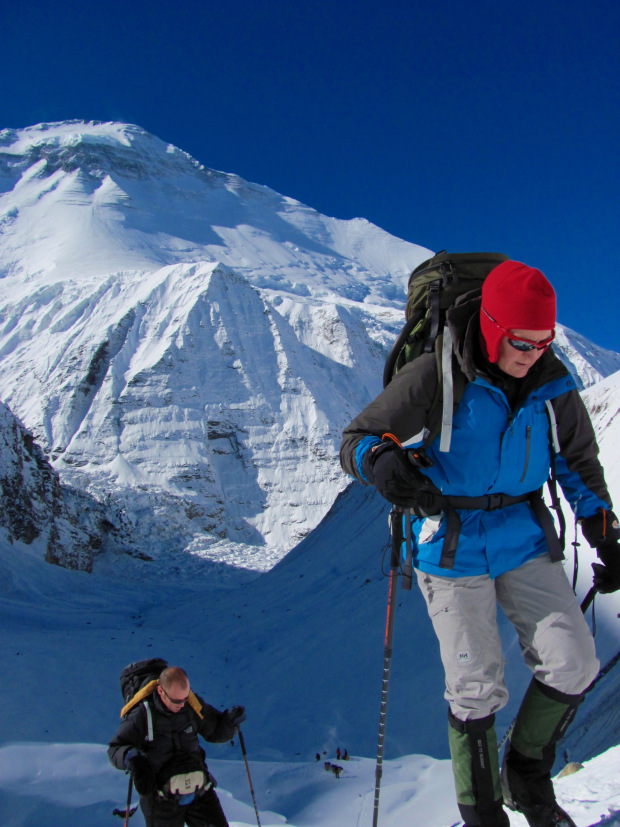
The important thing to consider is weather. No one can predict the weather that you will encounter. OK, so all the photo’s you’ll likely have seen used in promoting trekking in Nepal probably have clear blue, sunny skies. It’s not always like that. Even if that were the case (and we hope it is for you) as we mentioned previously the higher you go, the colder it gets. Indeed the Himalayas are often referred to as the third pole and as a general guide temperatures decrease by 6C for every 1000m gain in height. This does not include the wind chill factor.
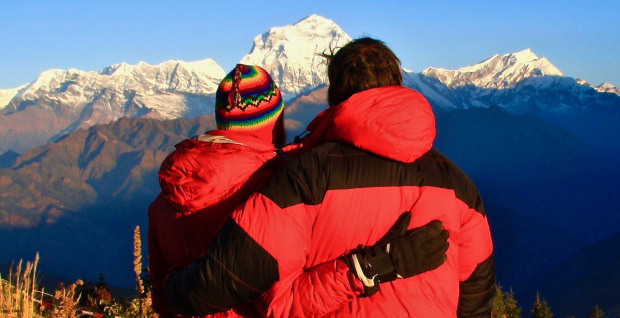
Various treks reach different elevations. But for many, at night time it’s entirely possible that temperatures will fall below freezing at night time and on some even during the day. So, warm clothing is essential.
The main trekking season is between mid-September to mid-May. Nepal is in the northern hemisphere, so it is autumn/winter/spring depending upon when you are visiting Nepal. OK, so Nepal is actually just about on the same latitude as Florida and at its lowest elevations has a sub-tropical climate, but the Himalayas are the highest mountains in the world too and are permanently snow-covered. Indeed the temperatures on the highest summits may well be -40C or lower. Brrrr.
Being the highest mountains in the world, the Himalayas create their own weather and as such this can be very unpredictable. Sometimes even localised. Rain, snow and sudden, violent storms are always a possibility and should be anticipated.
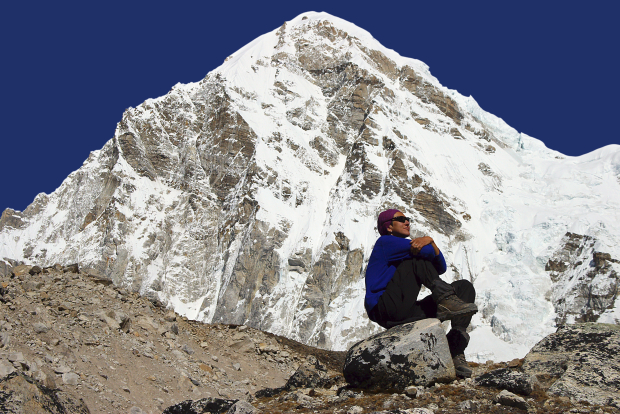
It is crucial that you are prepared for all such inclement weather possibilities as well as decreasing temperatures too. If you took certain essential items and didn’t need them, then that’s great. A real bonus. But, what if you hadn’t and did need them?
Another thing worth mentioning is the strength of the sun’s rays at higher elevations. On sunny days in the Himalayas although the actual air temperature may be relatively low, the sun’s rays make it feel warmer than it actually is. The natural temptation is to expose a bit of flesh and get a ‘trekkers tan’, not too different to a ‘truckers tan’. Fair enough. But, we’d point out that the strength of those rays is much stronger in the higher, clean, dry mountain air. So, your flesh can burn much quicker than you realise. Sunburned legs in particular are not a good idea. Regular use of a high strength sun cream is essential. Or better still keep skin covered with loose fitting clothing and wear a sun hat too. Some high altitude treks will most likely involve crossingsnow fields, which reflect and intensify the sun’s rays too.
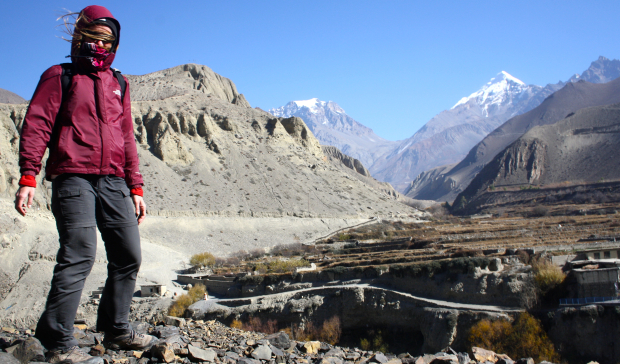
Watch out for sensitive parts of the body like the nose, tops of the ears and lips. Both can become dry and very sore. A total bloc for these body parts is a good idea.
We covered in our previous article what you should be carrying with you in your day sack. We mentioned additional warm clothing, assuming that the trekking day was a bright, sunny morning and heading to a higher elevation.
Of course walking is physical exertion and so as you continue to walk your body temperature rises and it’s only when you stop and your body temperature begins to drop naturally that you realise that actually it’s quite cold. You’re also walking up a steep-sided mountain valleys and the sun just seems to disappear in a split second and as a result the temperature drops quickly as a result.
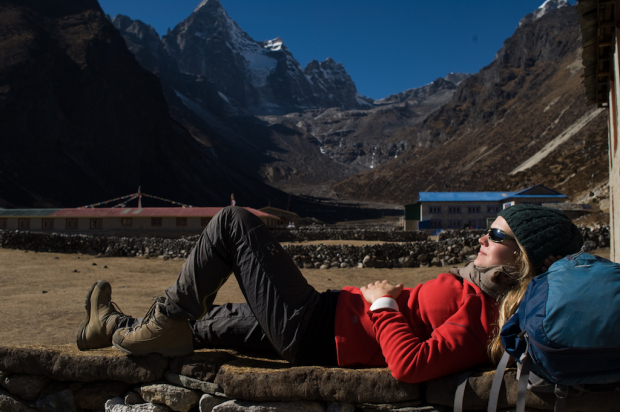
Strong and cold winds, heavy rain and even snow are all possibilities too.
Now we know many outdoorsy type people who relish these inclement weather conditions and can’t wait to test out their outdoor clothing and gear accordingly.
Maybe you’re more like us and would prefer not to. But, on your trek you simply have to be ready to do so and be prepared for such eventualities.
We favour the principles of layering with the outermost layer affording total protectionaccording to what the weather is at that moment in time.
In its simplest form layering is just putting on more layers of clothing when it’s cold and removing them when it’s warm. Into the mix we’ll quickly add wind and rain. If it’s windy and/or raining you protect your body accordingly.
OUTER LAYER PROTECTION
So, let’s consider the outer layer protection. A waterproof jacket (with a hood) and waterproof over trousers.
But, both need to be breathable as well as windproof and such items exist. Any good outdoors shop sells these.
The need to be waterproof is perhaps most readily appreciated. A wet body is unwelcome, but can also lead to other complications (a cold, falling body temperature etc). A jacket that is showerproof is just that. Waterproof, showerproof etc are all defined terms. So, a showerproofjacket will only keep the rain out for a time. Your jacket and trousers need to be properly waterproof.
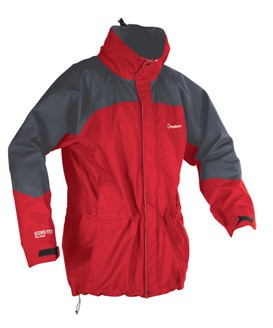
Breathable- It’s fine keeping the water out, but along with physical exertion comes perspiration. That’s mostly water too and it’s coming from you, not from the skies. That water needs to go somewhere and not remain on your body. Otherwise that rather defeats the object of keeping the rain out. Wearing a heavy duty plastic bag will keep the rain out. But, just try running around the back garden for 30mins wearing one of those on a dry day and you’ll find yourself soaking inside.
The moisture is remaining on your body, cooling you down and your body is now using energy trying to maintain a warmer body temperature, but it’s a vicious circle. So, the fabric needs to be breathable as well as waterproof. In other words the fabric allows the body’s moisture to pass through and out of the fabric membrane whilst keeping the rain out at the same time.
Windproof– A very cold wind may well mean more layers of warm clothing as well as the outer layer protection from the wind. A cold wind takes away heat from the body and so your body uses more energy trying to keep the body temperature up, but a really cold wind will win the battle and in extreme cases can lead to hypothermia. Even if it’s not raining a jacket and trousers made from a fabric that is waterproof, breathable and windproof is keeping that biting wind away from your body.
If it’s a storm then it’s likely a combination of heavy rain, strong wind and a fall in temperature. But, your additional layers and that all important outer layer is giving you the best protection from the elements.
Goretex is usually the fabric most people have heard of. It’s a trademark fabric. It’s widely used by many manufacturers of outdoor garments and being the best known, is usually a little more costly. There are others such as Texapore that are just as good. Once again, we recommend you visit an outdoors shop where the staff are outdoorsy people and let them guide you. Pay special attention to the stitching too. Stitching is clearly putting holes into the fabric, so that stitching needs to be seamed properly. Again, get the shop assistant to explain the stitch seaming of a particular jacket.
One thing these special waterproof/breathable/windproof fabrics have in common (and not widely publicised) is what is referred to as a failure rate. In other words a batch of fabric isn’t as waterproof as it should be. It’s not common (although we have heard that a well known fabric has a 25% failure rate-but that is hearsay gossip), but we’ve had one in our life time. A triple layer waterproof jacket that leaked badly. Most good outdoor shops can quickly test in-house if there’s a problem and will readily exchange. But, sometimes they have to be sent to the manufacturer for testing before anything else happens.
I guess what we’re saying is that if you’re treating yourself to new items, buy them well in advance of your trek so that you’ve found out whether they are indeed waterproof.
Neither a good waterproof jacket (especially) or over trousers are cheap. But, if you’re canny and thinking ahead you can often pick them up discounted in ‘end of season’ sales. Next seasons versions will be much the same quality wise, maybe a minor design change or a different colour. That’s usually about all.
But, just like boots these garments usually have a decent lifetime duration. As well as being waterproof/breathable/windproof the material can usually take a few scrapes along the way that would shred an ordinary jacket to bits. That said, some of super-light weight fabrics that are now on the market can rip a bit too easily. So, you might want to add a fabric repair kit to your shopping list and most good outdoor shops sell these.
TREKKING TROUSERS
Now to the layers. We’ll start with the legs first. A pair of trekking trousers. No, denim jeans. Denims will simply not do at all. They’re quite heavy for starters, but if you get them wet not only do they become seriously heavy and cumbersome to walk in, you just aren’t going to be able to dry them out. Trekking trousers are usually cut to make walking uphill/downhill more comfortable. They tend to be reasonably lightweight too, afford some protection from the wind and may well even be showerproof. You can even get trekking trousers that with the aid of zippers built into them will convert into a pair of shorts in a matter of seconds.
As for shorts themselves. You may well get the opportunity to trek in shorts depending upon the weather and how ‘outdoorsy’ you are. Personal choice really. Just keep in mind what we said at the beginning about dressing conservatively and protecting flesh from the sun. But, yes, we do appreciate that trekking in shorts feels rather good.
BODY WEAR
The torso. Here’s where your body generates and potentially loses heat the most and heat is energy.
Firstly you need a base layer. This is the ‘next to the skin’ layer. These are very lightweight, so it’s a good idea to have two, with one that has thermal properties. It also needs to be breathableand have good wicking properties. Wicking is the material taking away the body’s perspiration. All your other layers need these properties too, but it clearly makes sense that the ‘next to skin’ layer simply has to as it’s the start of that breathable/wicking process to help keep you as dry as possible.
Next layer is a warm jumper. Fleece is best as it’s lightweight as well as warming. A good fleece should again be breathable and have good wicking properties.
Perhaps the best way to describe/demonstrate wicking is when you do your usual laundry and are washing a fleece/base layer within that wash. Most day to day clothing items after the wash cycle need a fair bit of drying on the washing line, or in the tumble dryer. But, the fleece and the base layers are almost dry straight out of the wash. The water from the washing has been wicked away during the spin dry cycle.
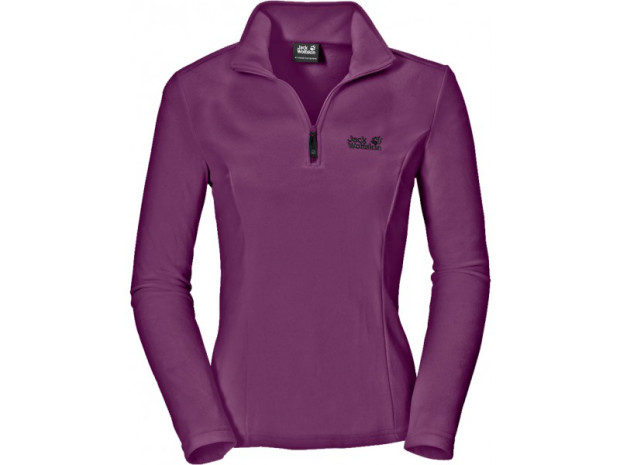
There’s the other important thing. These items of clothing dry quickly when wet. There are times when you may not get your waterproofs on fast enough, or sometimes it’s just not raining hard enough to bother. So, you’ve gotten these items a little wet and you need them to dry quickly so you aren’t trekking in damp clothes the next day.
Some people perspire more than others. That’s just how it is and even the best breathable wicking materials won’t entirely manage this. Also with a day sack even the best ‘ACS’ doesn’t ensure a dry back.
But, these items really do make a difference. Certainly were you to be wearing (say) a cotton t-short etc there is significant difference in both wicking and drying out time and weight too.
The next layer is a Gilet. Now, some people miss this layer out and go straight to the warm jacket, or the fleece jumper. Nothing wrong with that. A Gilet is an (optional) in between. It’s a sleeveless type of jacket in a way. Not a body warmer as such, but it does add an extra layer of warmth to the torso and good ones are usually windproof too (as well as breathable/wicking). We like Gilets as they help keep the body warm without the necessity for a jumper or a heavier, more restricted warm jacket in some eventualities. A half-way house if you like.
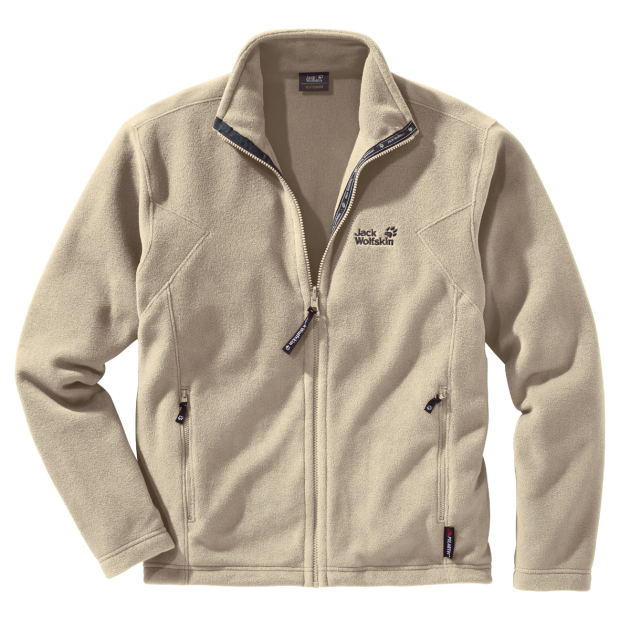
That’s not to say that a warm jacket is not an essential. It is. Again, fleece is ideal as it’s lighter in weight.
Many or all of these items will be familiar to regular hill walkers and you may well indeed already have them. Great! If so, we’d recommend that with the waterproof jacket and trousers you give them a new lease of life by popping into your local outdoors store and getting a bottle of detergent specifically designed for such garments, as well as a bottle of wash in waterproofer.
Some people ask us about down jackets and indeed we’d suggest you have a down jacket on trek, particularly those that reach very high altitudes. It’s a matter of opinion though. We find that a down jacket can get a bit too warm whilst trekking. But, we’d still take one along and likely have it in our own main baggage as we think that after a days trekking it’s a good idea to get out of the trekking clothing and change into something for the chilly night. It gives our trekking clothing a chance to dry out and even if that’s just from body moisture we don’t like sitting around in dampish clothing and feeling colder and colder.
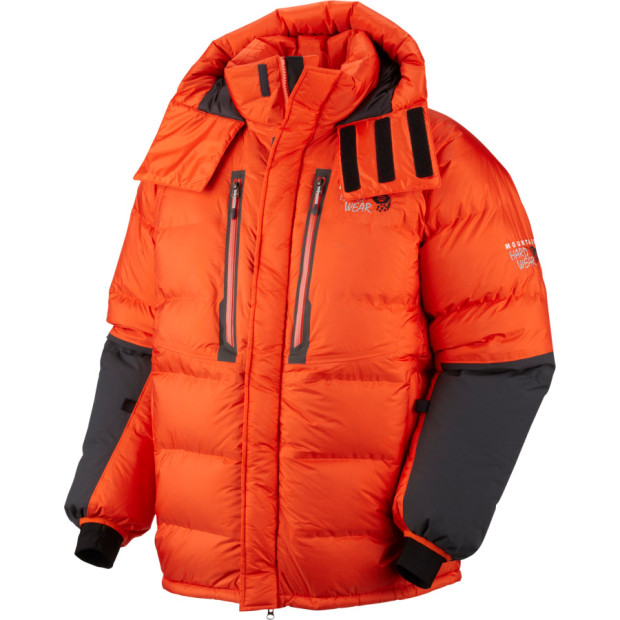
In theory the other layers of clothing you already need to bring are doing the same job. It’s worth mentioning that a decent down jacket suitable for trekking/mountaineering purposes is not cheap. They are invariably a ‘cut above’ the fashionable body warmer style down jackets in many respects. It may well be that you’ll have no real future use for such an item. However, you can easily rent a down jacket from one of many places in Kathmandu. These are usually ‘Made in Nepal’ versions and not the international brand name ones. But they are often just as good (or pretty close). You can also buy these in Kathmandu if you do fancy treating yourself to a down jacket without breaking the bank.
Genuine, international brand name outdoor gear can be found in Kathmandu nowadays too, but price wise there’s no significant advantage. There’s no shortage of fakes either. Some are blatantly obvious, others not so.
FEET
Feet- we’ve talked about boots previously. You need good quality hiking socks too. Maybe 2-3 pairs? One to wear, one clean and one just in case. Don’t forget to bring spare laces for your boots.
Gaiters – Some people swear by these, others don’t bother. They are useful if you have to trek through snow, which is always a real possibility.
HANDS
A lightweight pair of thermal gloves, plus a more heavy duty waterproof outer glove.
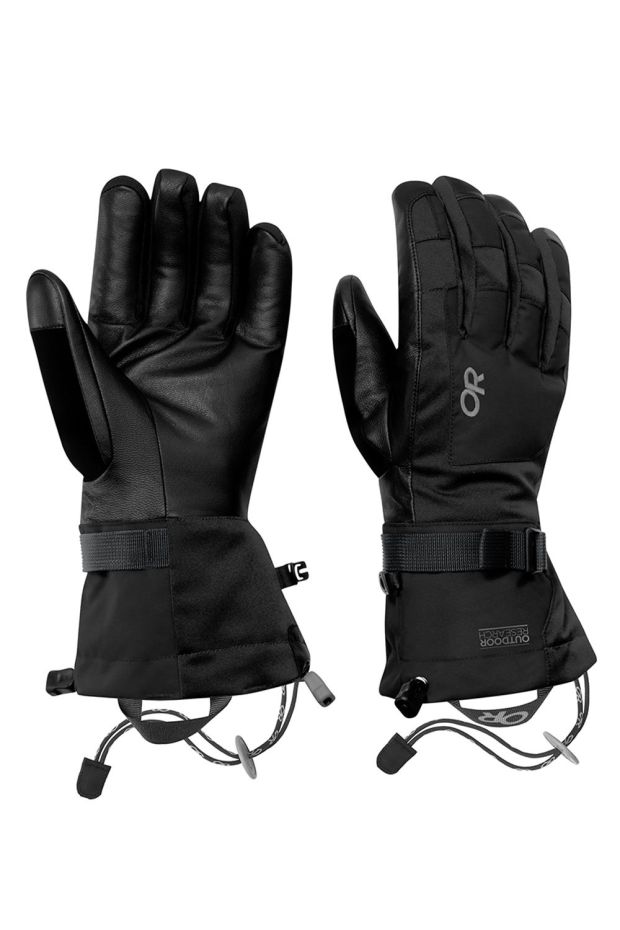
HEAD
As mentioned previously the sun can be strong, so do bring a hat to keep the sun off your head. Also bring a warm hat for night time cold and colder day time temperatures at higher elevations.
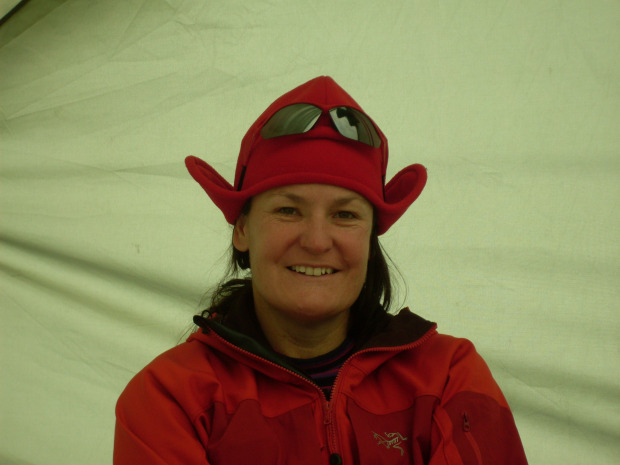
OTHER ITEMS
Trekking Poles- Again some people won’t go go anywhere without their trekking poles. We do find them rather useful, particularly when descending deep, rough terrain.
Camera – Actually this is optional. You don’t have to take photographs and some people don’t. Chances are you’ll want to. But don’t forget to bring spare batteries. The colder temperatures and/or frequent use saps your camera batteries.
Sleeping Bag – Unless you’re undertaking a luxury lodge trek a sleeping bag is essential. It will need to be comfort rated for night time temperatures appropriate to your chosen trek (usually -15C). A good quality sleeping bag can be an expensive purchase, so if you don’t already have one……don’t worry……good quality sleeping bags can be rented inexpensively in Kathmandu.
Casual Clothing/Footwear – Let’s call this apres trek! Remember there are weight restrictions (see our previous article) and whilst some people seem to like living in their trekking clothing throughout, you may just want a change of clothing. There’s no dress code, so best bib and tucker is not required. Place the emphasis on keeping warm and dry. Lightweight footwear, like trainers, makes a welcome change from wearing trekking boots. Thick , warm socks are essential too. You may/may not want to bring along sleepwear. Thermal sleepwear is actually a good idea.
Toiletries – Of course you’ll be bringing these. Do we really need to tell you what toiletries to bring?
But, we have already suggested you have toilet paper in your day sack as well as a packtowl and an anti-bacterial handwash, You’ll need a small towel too, unless you’re undertaking a luxury lodge trek.
Underwear – Yes, you’ll want underwear items. This is clearly a matter for personal preference within the limitations of weight restrictions allowed. We’d say at least 3 sets of underwear.
First Aid Kit – You must bring one with you. This should contain:
antiseptic cream, throat lozenges, diarrhoea treatment (Imodium), painkillers, plasters and blister treatment, insect repellent, and re-hydration salts (Dioralite). Glucose tablets and multi-vitamin tablets.
*We recommend you visit https://sideeffectsofxarelto.org/current-xarelto-lawsuits/ and discuss obtaining a prescription for diamox (altitude) as well as a broad spectrum anti-biotic such as Ciprofloxacin (intestinal) and Amoxycillin (Chest). You should discuss use, dosage and administration of such prescribed medicines with your doctor . The decision whether or not and when, you should take these, will rest solely with you
Repair Kit – It’s up to you, but we think it’s a good idea to bring a long a small repair kit, just in case e.g. needle and thread, duct tape, penknife etc.
Last, but not least the mobile (cell) phone, or smartphone as most are nowadays. You may well already have good reason to feel that you need to bring one along with you and have to keep in touch with back home as best you can. You may well be hoping to take a break from being a slave to your phone. Or even wondering if it’s actually going to work up in the Himalayas, or how to preserve/re-charge the battery.
Well, the chances are (depending upon your usual network service provider) that you’ll have a signal on treks in the Everest, Annapurna and Langtang regions. Treks into other regions may have limited or no signal. You’ll find even the most traditional of locals now have a mobile phone embedded into their faces. Making international calls via Nepal on a mobile isn’t cheap though. Wi-fi is often available at many trekking lodges too, although it may not be super fast and have some usage limitations. Still, we wouldn’t blame you for being unable to resist the temptation of ‘Facetubing’ piccies whilst on trek. “Look at the views from my room” seems to be somewhat popular. Your guide will be carrying a mobile and maybe, just maybe an instance may arise when you need to phone him/her (or vice versa). So, for that reason we’d say taking along your mobile phone is desirable. You might want to consider buying a Nepal sim card in Kathmandu. As for re-charging if you’re on a trek that overnights in trekking lodges, the supply of electricity is limited and you may have to pay to re-charge your battery. Usually your bedroom will not have any electricity. All we would say is try not to let your mobile phone get in the way of distracting you from enjoying being in one of the most spectacular mountainscapes in the world.
Finally do keep all your items safe and secure at all times. There used to be a time when many of the items you’d be taking along had no value to the locals. The good news is that theft remains uncommon, but it does happen as everything you take is of use and therefore has a black market value. You’d be careful anywhere else in the world with your items, so do the same in Nepal.
To help with your packing here’s a generalised list:
Walking boots (waterproof)
Socks
Trekking trousers
Waterproof overtrousers
Underwear
Baselayer shirts
Casual shirt and/or T-shirts
Fleece Jumper
Fleece jacket
Waterproof jacket
Sunhat
Warm hat
Sunglasses
Warm gloves or mittens
Headtorch and spare batteries
Sun protection (including total bloc for lips, nose etc.)
Water bottles 1 Litre x2
Washbag and toiletries
Antibacterial handwash
Selection of dry bags (to keep main baggage contents dry)
Small padlock (to lock trek bag)
Daypack 20 -25 litres
Holdall Bag/Large, unframed rucksack for main baggage
Sleeping Bag (except for luxury lodge treks)
Thermarest/camping mat (for camping treks)
Basic First Aid Kit (as detailed above)
2 x Passport Photo’s (for your trekking permit)
THE FOLLOWING ITEMS ARE OPTIONAL/TREK SPECIFIC:
Down jacket (recommended for high altitude treks)
Fleece/Thermal leggings (recommended for high altitude treks)
Trekking poles (recommended)
Training shoes or similar
Spare laces
Shorts
Gilet
Gaiters (you may encounter snow)
Scarf or buff
Travel/Casual clothes
Camera
Penknife (remember to pack sharp objects in hold baggage)
Repair kit – (eg. needle, thread, duct tape)
Mobile/Cell Phone (perhaps desirable but not essential)
Please note that some treks may require additional items e.g. walking ice-axe, step-in crampons etc.
Article originally published by Snow Cat Travel via WordPress
